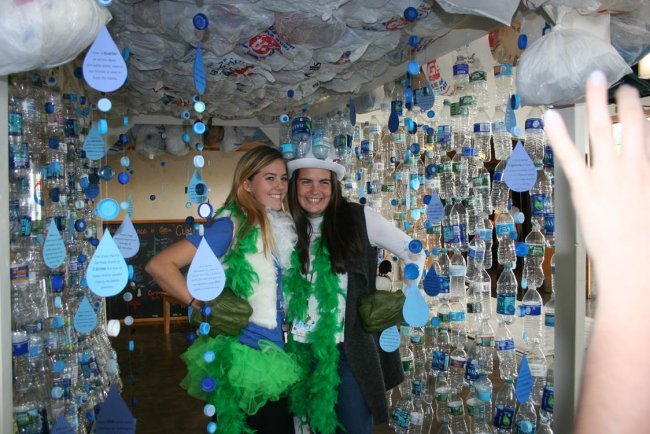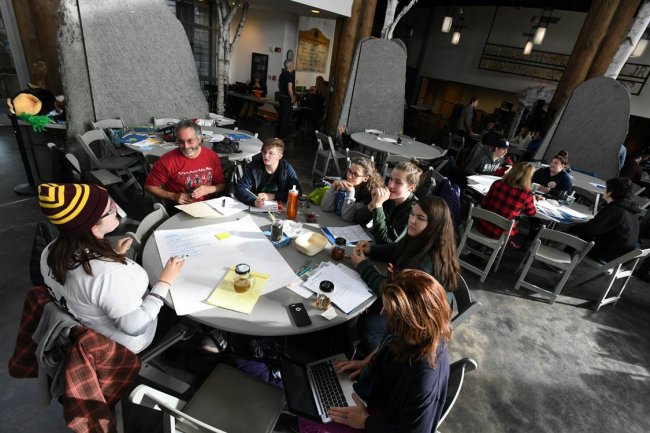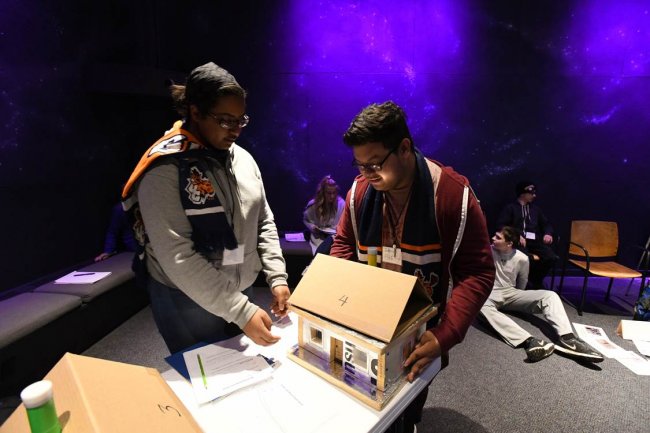ULIEA Winner Hosts 200 Students for 9th Annual Youth Climate Summit
Once again, our 2016 tier two winner, The Wild Center, has been pushing the envelope on youth climate change programming. On November 8 and 9, 230 students, teachers, faculty, workshop leaders and community members from across New York state came together for the 9th annual Adirondack Youth Climate Summit at The Wild Center in Tupper Lake, NY. Over the two days, participants attended numerous hands-on workshops to bolster their knowledge of climate change and, using that knowledge, developed climate change solutions to implement in their schools and communities. This event is the flagship of more than 10 Summits The Wild Center now runs and/or supports throughout New York State, Vermont, Ohio, Michigan, Washington, Finland, Liberia, Germany and Sri Lanka.
Believe it or not, The Wild Center’s Youth Climate Program, wasn’t always a global effort — in fact, the idea originated from a student. In 2008, a few New York students were invited to watch a major national climate conference at the Center. For one student, Zach Berger, a junior at Lake Placid High School, watching wasn’t enough. In the middle of the night, The Wild Center’s Director of Programs Jen Kretser received an email from Berger, asking if he could help organize a Youth Summit where regional students could come, learn, and develop their own action plans for their schools. The Wild Center hatched the Adirondack Youth Climate Summit from that idea. After nine years, the program has evolved but retains the same student-lead inspiration.
In 2017, 32 schools sent “green teams” — groups of 6-8 students and teachers — to the event. The Wild Center welcomed five newcomers including the Kurt Hahn Expeditionary Learning School and Central and Western New York schools who are looking to create their own youth climate summits. (The Wild Center will coach and mentor these, and two other schools, to host, coordinate and plan a youth climate summit using their Summit toolkit.)
“We love seeing new faces at our Summits because they represent even more youth getting involved in climate change solutions. STEM-inspired students who may not otherwise step up as leaders often find their voice within their Green Team, as they establish their Climate Action Plan (CAP). Nothing is more exciting, however, than establishing new Summits throughout the state and around the globe — it really demonstrates just how much young people care about this issue and want to act on it” explains Jen Kretser.
Jen Kretser reflected on her most memorable presentations: “One of my favorite moments was having two of our Youth Climate Summit alumni, Meadow Hackett and Gina Fiorile, present their experiences in the program. It is important that young people see themselves succeeding — it creates an atmosphere of hope,” said Kretser.
The event also featured a live stream to UN COP 23 in Bonn, Germany for Young & Future Generations Day, allowing students to watch “Uniting the World in Global Challenges Action,” a presentation by Miroslav Polzer, Secretary General/Executive Director at IAAI GloCha. “It was great to connect our students to the global youth movement on climate action so they know they are not alone and have the chance to chat with young people on the world stage,” said Kretser.
On day two, the students moved from learning to doing. Each of the schools created a 2017-2018 Climate Action Plan (CAP) and determined their environmental club structure for the coming year. CAPs range from school gardens to energy audits to working with NYS officials to commit to renewable energy targets at the three state-owned skiing facilities. At the end of the planning session, each green team presents their plans for the coming year. The CAP portion promotes leadership skills and tools necessary for a 21st century workforce.
Through speakers, workshops and activities, the summits have been powerful vehicles for inspiration, learning, community engagement and youth leadership development and this year was no exception. As The Wild Center looks to 2018 and their tenth annual summit, they are inspired to continue improving youth climate literacy with a focus on local climate impacts and solutions — actions that will make big differences for generations to come.


